Articles of 2005
Vinnie Ferguson – The Traditionalist
Growing up on the Lower East Side of Manhattan in the 1940s and ‘50s, Vinnie Ferguson was never afraid of a good scrap. While most of his friends loved baseball, he was more interested in boxing. At ten years of age he saw his first live bout – at Madison Square Garden – and from that moment on became obsessed with becoming a boxer.
“I was hooked,” said Ferguson, now 67 and still a resident of Manhattan. “I said I could do that. I have to do that.”
An older man in the neighborhood suggested that Ferguson visit the local Police Athletic League facility. “I was just a kid, so in my little mind I thought I’d go to the precinct and there would be a gym there,” said Vinnie, who speaks as much with his hands as he does with his mouth. “There’s a big Irish sergeant behind the desk and I meekly asked him if I could box there. He got a good laugh and sent me [downtown] to the Headquarters Gym at Mulberry and Houston Streets.”
The moment Ferguson entered that gym, spotted the two rings, and smelled the unique stench of stale sweat, he knew he had found a “home.”
Before long he was joined by his best friend, future lightweight champion of the world Carlos Ortiz. Both youngsters were quick learners and they each began beating much more experienced opponents with relative ease. Although Vinnie and Carlos were barely teenagers, they were being touted as future professional champions.
“Everyone said we were naturals, which was a lot of bull,” said Ferguson. “We might have had natural ability, but we both busted our asses. If someone taught us something new, we’d be practicing in front of the mirror all night long. In the morning we’d climb over a fence to run laps in FDR Park, which was alongside the East River. Other kids just weren’t willing to make the same sacrifices.”
Ferguson was undefeated in his first 64 bouts and won a slew of national and international titles. The good-looking youngster was so popular, he appeared on such television programs as The Mike and Buff Show, which was co-hosted by Mike Wallace (now a reporter on 60 Minutes), and his wife Buff Cobb.
When Ferguson received a boxing scholarship to the University of Wisconsin, Sports Illustrated ran a four-page spread on him. Back then, intercollegiate bouts regularly drew 11,000 fans to the university’s field house.
After winning the NCAA boxing title as a freshman, Jack Fiske, the longtime boxing writer for the San Francisco Chronicle, called Ferguson an “undefeated prodigy.” This specific prodigy was considered a shoo-in to win a berth on the 1960 Olympic team.
It was at the Olympic Trials in San Francisco that the seemingly invincible Ferguson showed he was made of flesh and blood, not iron and steel. Not only was he stopped by Eddie Crook of Detroit – the eventual 165 pound gold medalist in Rome – he was carried out of the ring on a stretcher and would spend ten days in the hospital under careful observation.
“I was painting Crook like a Picasso,” said Ferguson while displaying a piston like jab that looks like it could still flatten a building. “We got in a clinch and as I was breaking away, he hit me with an uppercut. I never saw the punch coming and it knocked me totally unconscious.”
Vinnie was given “every conceivable test” and released from the hospital with a clean bill of health. By that time he had left the University of Wisconsin and had transferred to Manhattan College in the Bronx where he would earn a degree in physical education. He next convinced his hard-nosed father, Eddie, to let him turn pro.
“My father, who could be a tyrannical son of a gun, always insisted I get an education,” recalled Ferguson. “When I turned pro, he also insisted he was going to be my manager. Out of respect, I would never argue with him.”
Ferguson was still so popular he made his pro debut at Madison Square Garden, at a time when it usually took a fighter 20 or more straight wins to earn the right to compete there. Between November 1957 and May 1958, Ferguson won five straight fights, three by knockout. Then he met Doug Jones, who five years later would lose a close decision to Muhammad Ali in the same MSG ring. The Ali-Jones bout was tabbed the 1963 Fight of the Year by The RING magazine.
“When I lost in the Olympic Trials, I never saw the punch coming,” said Ferguson. “Against Jones I saw the right hands coming, but couldn’t get out of the way. Throughout my career I trained like a beast and never got tired. In this fight I was hoping to bounce back. But the fight got stopped in the second round. I was on my feet, but banged up pretty good. Jones could fight.”
Afterwards, Ferguson’s father tore up his contract and told him he was through. The onetime undefeated prodigy was only 20 years old and forcibly retired from the game he loved. His final professional ring ledger was 5-1 (3 KOs).
“I was heartbroken,” said Ferguson. “I lose two fights in my entire career and my contract gets torn up. I would have loved to continue and had plenty of opportunities. A lot of managers and promoters sent their emissaries to sign me up. But my father was a stern guy and wouldn’t bend. He used to say life was like a street with lots of holes and no lights. He would show me where the holes were so I wouldn’t step in them.”
Vinnie can only assume that his father was concerned about his physical well-being, a notion that was driven home two years after his forced exit from the ring. Charley Mohr, a good friend of Vinnie’s, was killed in the ring while fighting for the University of Wisconsin in 1960.
“I was instrumental in Charley getting into the college,” said Vinnie. “He had asked me to put in a good word for him. He wasn’t a very rugged kid and, having attended a Catholic seminary, he was torn between becoming a boxer or a priest. After he died, it bothered me for a long time. I felt halfway responsible.”
It was later learned that at the time of his death Mohr was receiving shock treatment for severe depression, much of which was likely brought on by the conflicts between his spiritual and athletic interests.
Boxing, Vinnie insists, is not for the fainthearted and can easily bring you as much pain as elation. “At its best and worst, there is nothing like it,” he said. “I compare a boxer to a long-distance runner. The only difference is the runner doesn’t have someone trying to kick the sh** out of him.”
And winning, he adds, is a lot more complex than it looks. “When you see good boxing, there is nothing Neanderthal about it,” he explained. “You have to do one thing to accomplish another thing. A good boxer is thinking three and four steps ahead. Occasionally you’ll hit a guy six or seven times with decent shots and he won’t even blink. Abruptly you throw out your game plan and have to start from scratch”
He remembers discussing the nuances of boxing and acting with the late eclectic filmmaker, John Cassavettes, who was a diehard fan. “I told him that acting must be a rough business, and he told me I was crazy,” said Ferguson.
“I get to hide behind my makeup, behind my wardrobe, and behind my character,” Cassavettes responded. “That’s not me out there on stage, that’s my character. Nobody knows anything about me and nobody cares. They only see who I’m playing. But a prizefighter, he’s standing in front of 10,000 people with no shirt and in a pair of shorts with some guy raining punches on him. Everything about you is exposed every minute you’re in the ring. You’ve got nowhere to hide. All of your courage and determination (or lack of it) is there for everyone to see. Acting is easy. Boxing is a bitch.”
“Vinnie is a traditionalist, who doesn’t realize how admired he was by a wide range of people,” said Richard O’Neill, the former vice president of the New York City Patrolmen’s Benevolent Association, and a childhood friend. “He’s too humble to admit, or even realize, how revered he was by a generation of New Yorkers. He appealed to everyone, even people that were not boxing fans or couldn’t have cared less about the sport. When I first started amateur boxing, all I heard over and over gain was that nobody in the entire New York area would fight Vinnie Ferguson or Carlos Ortiz. That’s how good they were.”
“The first thing you realize about Vinnie is that he is the quintessential New York guy,” said John O’Donohue, a retired NYPD lieutenant and current actor who played Sgt. Eddie Gibson on NYPD Blue. “You could see him anywhere in the world and automatically know he was a New Yorker before he even opened his mouth. He’s quite a character.”
Ever the traditionalist, Ferguson, who worked for many years as a New York State boxing inspector and referee, is the first to admit that female boxing holds no appeal for him. “I’m all for women doing whatever they want,” he said. “They can be police officers, firefighters, whatever. But personally, I don’t think they belong in the ring. I don’t want to see a woman with her eye ripped open or snot coming out of her nose. It’s unbecoming.”
Vinnie concedes that we live in a crazy world and that prospective prizefighters have to be a little crazy to be drawn to such a demanding sport. However, he chuckles at a college memory that makes you realize just how subjective the notion of craziness really is.
“When I was at Wisconsin, I’d wake up every day and run at 6:00 A.M.,” he explained. “It was so cold I’d be all bundled up and running on ice across a lake. Nobody else got up and ran that early, but I did it every day. Everyone told me I was crazy.
“But,” he adds, “While I was battling the bone-chilling cold, I’d be thinking of winning a title so I had a lot of motivation. As I was running, I’d always see this guy sitting on a chair with his fishing pole sticking in a little hole he had chopped into the ice. As I ran past him, I’d wave and he’d look at me like I was crazy. I’d look back at him and think the same thing.”
It seems that wherever you go throughout the United States, when you speak to old-time boxing people Vinnie’s name inevitably comes up. You get used to hearing what a great fighter he was, and what a genuine character he is.
At a recent International Hall of Fame induction weekend in Canastota, New York, he was introduced to George Chuvalo, the longtime Canadian heavyweight champion who had given hell to the likes of Muhammad Ali, Joe Frazier, Floyd Patterson and even Doug Jones.
“You’re the Vinnie Ferguson,” said Chuvalo, an extremely rugged man who is not easily impressed.
“Guilty!,” said Ferguson.
“In the fifties you were the talk of Canada,” said Chuvalo. “All we heard from James J. Parker (a Canadian heavyweight who trained at Stillman’s Gym in New York) was that you were one of the greatest fighters he ever saw and that you were going to be the next middleweight champion of the world.”
-
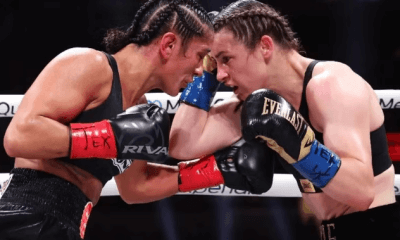
 Featured Articles3 weeks ago
Featured Articles3 weeks agoResults and Recaps from New York Where Taylor Edged Serrano Once Again
-
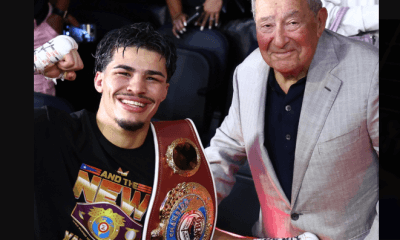
 Featured Articles3 days ago
Featured Articles3 days agoThe Hauser Report: Zayas-Garcia, Pacquiao, Usyk, and the NYSAC
-
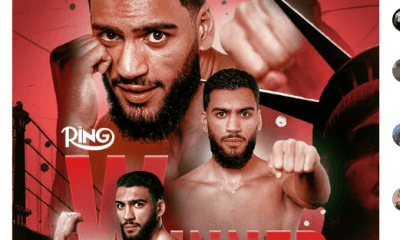
 Featured Articles3 weeks ago
Featured Articles3 weeks agoResults and Recaps from NYC where Hamzah Sheeraz was Spectacular
-

 Featured Articles3 weeks ago
Featured Articles3 weeks agoFrom a Sympathetic Figure to a Pariah: The Travails of Julio Cesar Chavez Jr
-
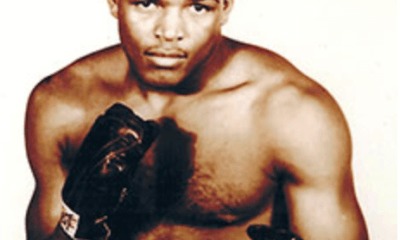
 Featured Articles3 weeks ago
Featured Articles3 weeks agoPhiladelphia Welterweight Gil Turner, a Phenom, Now Rests in an Unmarked Grave
-
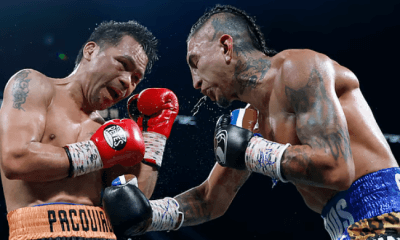
 Featured Articles2 weeks ago
Featured Articles2 weeks agoManny Pacquiao and Mario Barrios Fight to a Draw; Fundora stops Tim Tszyu
-
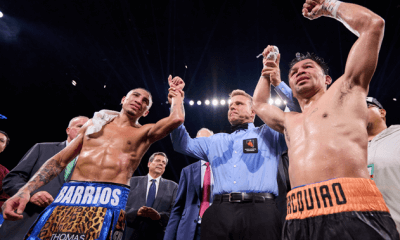
 Featured Articles1 week ago
Featured Articles1 week agoArne’s Almanac: Pacquiao-Barrios Redux
-
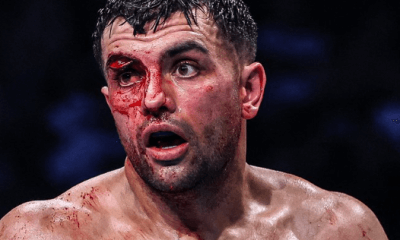
 Featured Articles4 weeks ago
Featured Articles4 weeks agoCatterall vs Eubank Ends Prematurely; Catterall Wins a Technical Decision














